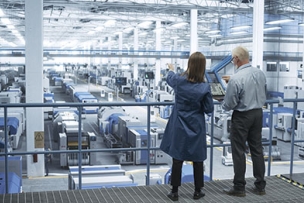MCR Safety has over forty years of experience as a leader in the field of personal protective equipment (PPE). Our assortment of offerings includes gloves, glasses, and garments which are made from the highest quality materials available to ensure maximum safety, comfort, and style.
From the Stone Age to recent times, humans have mined the ground for precious stone and mineral resources to be used in a variety of applications. From fashioning crude tools to fashioning exquisite jewelry, humans have dug and tunneled into the earth to access those precious materials. The history of mining is a long one, and its importance continues today.
Unfortunately, mining has always been a dangerous endeavor, and countless miners have given their lives to the industry. Today, mining remains a hazardous career, but modern advances have improved conditions for workers. Among these advances are the safety and health standards enforced by the MSHA, mandatory safety training, and innovative personal protective equipment (PPE).
MCR Safety designs PPE that protects miners from numerous mining-related hazards.
What does MSHA stand for, and what is MSHA?
MSHA stands for the Mine Safety and Health Administration. So, what does the administration do? MSHA works to prevent death, illness and injury across mining operations in the U.S. They accomplish this by promoting safe and healthy workplaces, developing safety-related rules, and then enforcing those rules. Mining has always been a dangerous industry but viewed as an essential operation.
After recognizing the enormous risks to miners’ health, the U.S. federal government began passing legislation to protect miners back in the late 19th century. In 1891, the government passed its first mine safety statute, which established minimum ventilation requirements in underground coal mines and prohibited the employment of children under the age of 12. Since then, small but incremental changes have continued to be made to improve working conditions for miners.
The Federal Coal Mine Health and Safety Act of 1969 is recognized as the most comprehensive legislation up to that point concerning mining safety. This act was later amended in the Federal Mine Safety and Health Act of 1977 (Mine Act), which drastically cut mining fatalities and established the U.S. Department of Labor’s Mining Safety and Health Administration (MSHA) to oversee the industry.
Since its inception, MSHA has enforced compliance with the safety and health standards established by the Mine Act. The agency’s mission is to prevent death, illness, and injury from mining and to promote safe working conditions for miners. It does this by developing and enforcing safety and health rules for all U.S. mines, including mandatory safety training.
What is MSHA training?
One of the ways MSHA promotes mine safety is through mandatory training. Federal law requires that all miners obtain annual safety training to prevent injuries and fatalities. To assist miners, MSHA provides a wide array of materials to ensure all miners receive this training. Here are several helpful MSHA websites.
- Safety Database – manuals, presentations, and guides listing potential hazards
- Safety Videos – training videos on health and safety
- Safety Alerts – information for equipment hazard alerts
For additional resources, check out the MSHA websites listed below:
https://www.msha.gov/training-education
https://www.msha.gov/training-education/safety-health-materials
To learn more about MSHA's recommendations for PPE for mining workers, continue reading this article here.
Previously Featured on MCR Safety's blog.








Talk to Us!
Leave a reply
Your email address will not be published. Required fields are marked *